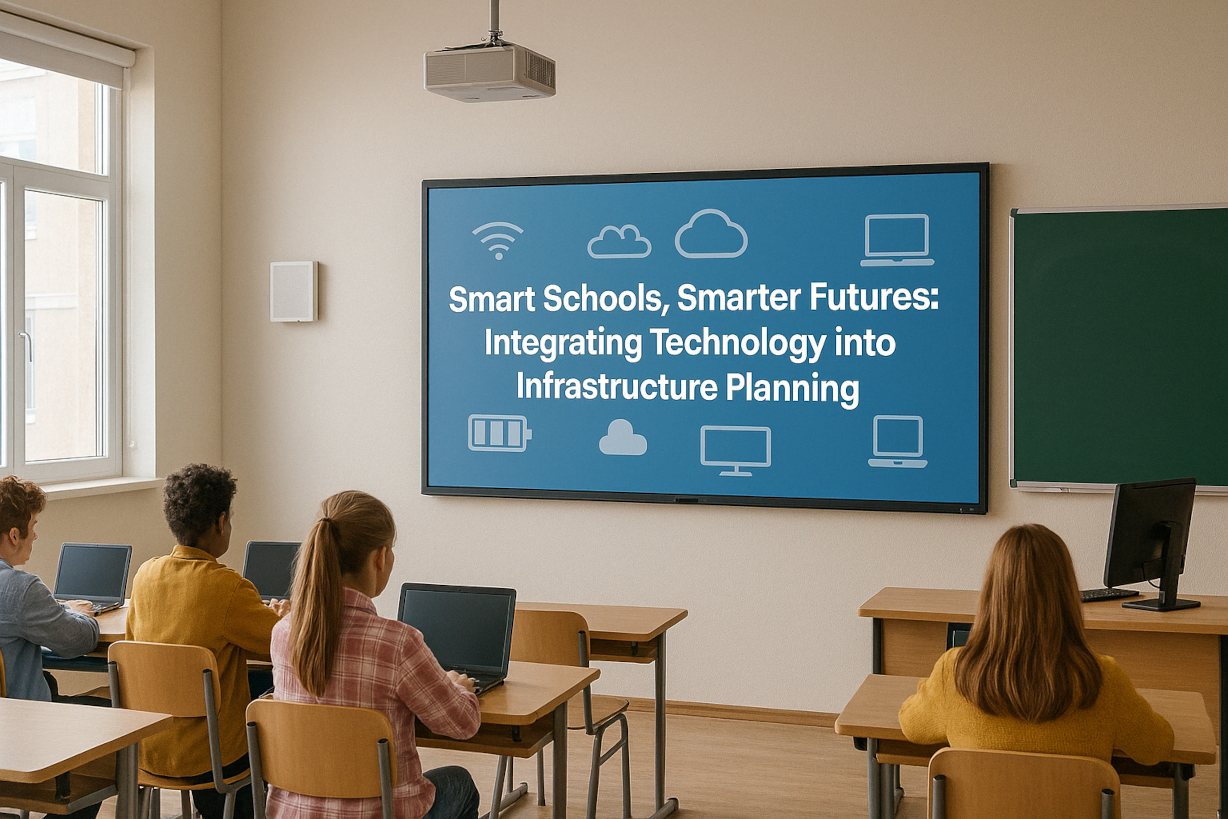In today’s rapidly evolving educational landscape, technology is no longer a luxury—it's a necessity. As schools strive to deliver high-quality, future-ready education, their physical infrastructure must be strategically designed to support the seamless integration of educational technology (EdTech). The concept of the "smart school" is taking center stage, redefining how institutions plan and execute infrastructure projects.
Smart Schools, Smarter Futures: Integrating Technology into Infrastructure Planning


The Digital Transformation of Education
Digital tools are reshaping teaching and learning. From interactive whiteboards and learning management systems to AI-powered tutoring and virtual reality simulations, EdTech has the potential to personalize learning, engage students, and streamline administration. However, the effectiveness of these tools is directly tied to the infrastructure that supports them.
Key Infrastructure Elements to Support EdTech
To truly harness the power of technology in education, schools must focus on upgrading and future-proofing several core infrastructure components:
1. Reliable Power Supply and Backup Systems
Many EdTech tools rely on uninterrupted power. Smart classrooms require stable electricity to keep devices, servers, and internet connections functioning. Investing in power backup solutions such as inverters, UPS systems, or even solar energy can prevent downtime and ensure learning continuity.
2. Robust Internet Connectivity
High-speed, campus-wide internet access is the backbone of any smart school. With the increasing use of cloud-based applications, video conferencing, and online assessments, schools must ensure strong bandwidth, Wi-Fi coverage, and cybersecurity protocols. Structured cabling and wireless access points must be part of the initial infrastructure plan, not an afterthought.
3. Device Integration and Charging Facilities
With the rise of BYOD (Bring Your Own Device) and school-issued tablets or laptops, schools must accommodate safe storage and charging stations. Classrooms, libraries, and common areas should include ample charging outlets, USB ports, and device-friendly furniture.
4. Smart Classrooms and AV Infrastructure
Interactive smart boards, digital projectors, sound systems, and classroom management software require coordinated infrastructure support. This includes proper mounting, cabling, acoustics, and user training. Maintenance access and tech support should also be factored into design planning.
5. Data Management and Server Rooms
With the digitization of student records, lesson plans, and assessments, data storage and security are paramount. Schools need secure server rooms with controlled temperature environments, fire safety systems, and restricted access.
6. Flexible and Adaptive Learning Spaces
Modern learning environments should be modular and adaptable. Movable furniture, writable surfaces, and tech-friendly layouts encourage collaboration and support a range of teaching styles. Infrastructure must allow for future additions like AR/VR stations, robotics labs, or makerspaces.
Planning for Scalability and Future Growth
Smart infrastructure isn't just about meeting today's needs—it's about anticipating tomorrow's. Infrastructure planning must consider:
-
Student population growth
-
New educational technologies
-
Changes in curriculum or pedagogy
-
Remote and hybrid learning models
Scalable network systems, modular classrooms, and cloud-ready platforms are critical to accommodating these changes without frequent costly overhauls.
Equity and Accessibility Considerations
As schools embrace digital transformation, it's vital to ensure equitable access. Infrastructure should support assistive technologies for students with disabilities and provide access points for underprivileged students. Inclusivity must be a foundational pillar of smart school design.
The Role of Stakeholders
Effective integration of EdTech requires collaboration between school leaders, IT specialists, architects, and educators. Input from teachers and students can provide valuable insights into real-world needs and help shape user-friendly environments.
Leveraging Tools Like Tutelage Manager
To streamline operations, enhance communication, and support smart infrastructure initiatives, schools can use platforms like Tutelage Manager. This all-in-one school management system simplifies administrative tasks, improves data handling, and supports digital transformation at every level. With Tutelage Manager, managing a smart school becomes easy, flexible, and highly efficient.
Conclusion
Integrating technology into infrastructure planning is no longer optional—it's a strategic imperative. By investing in smart infrastructure today, schools can create more engaging, inclusive, and resilient learning environments for tomorrow. The future of education is digital, and the journey begins with smart, forward-thinking infrastructure decisions.
Author's Note: This article is intended for educational administrators, planners, and school management professionals exploring how to future-proof their institutions for the digital age.

